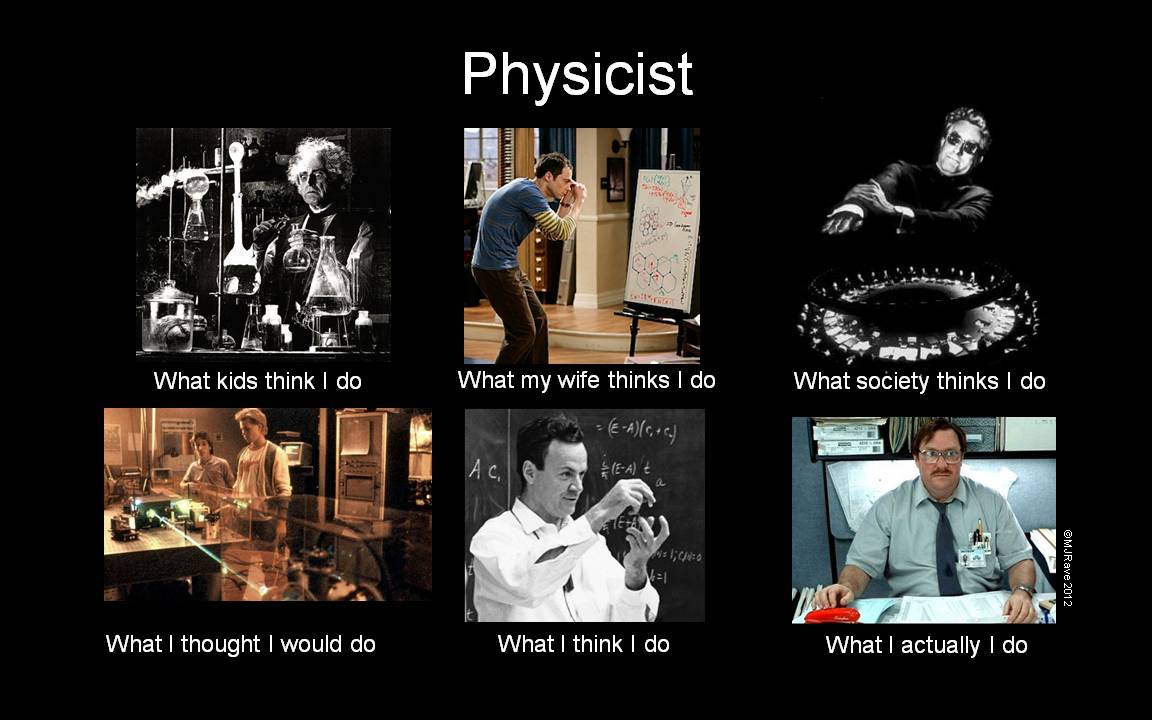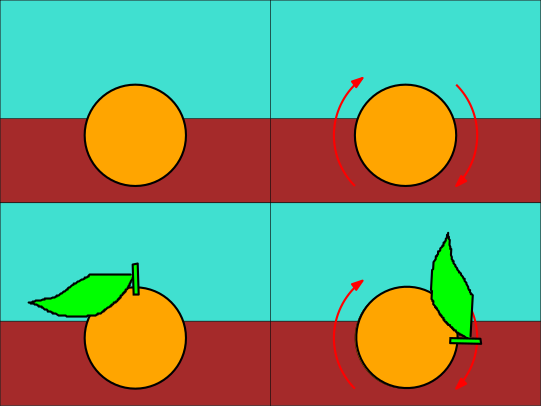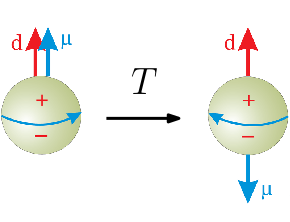
Symmetry and Physics: how to explain to my grandma what I do.
15th of August. National holiday in Italy. All my family meets together to celebrate. Break between the first and the second course. Frozen ready meals - my standard menu when I'm away - seem like a distant memory. It's a beautiful day, the birds sing in the trees, the sun is bright in the sky, everything is perfect when it happens:
"But, what do you do exactly?"
It's my grandma. She's looking at me with a skeptical face, like I was a door -to-door salesman that wants to fool her. The tone of the question leaves no doubts, this time a vague answer won't be enough. My usually escape strategy in these situations is using the tested formula "I am a researcher in Physics. Theoretical Physics'' - like "My name is Bond. James Bond'', but a bit more nerdy - that, after a moment of solemn silence, is followed by "I work with computers'', just to give a more concrete image of my job. At that point my grandma usually nods making clear she still has no idea of what I do. But this time is different, this time she demands a satisfactory and detailed explanation and I know there is no way to avoid it. I'm screwed.
I know, you are probably thinking I'm too melodramatic and you are probably right. Some of you maybe don't even get what the matter is. The fact is that is extremely hard to explain to people who are not in the scientific sector what a researcher actually does at his job. Just to be clear, I am not saying that it's because we are smarter or better than others or because our work is tougher than others; if you are a specialist in your own field, it's clear that people that never saw those things in their life won't be able to have a clear and specific idea of what you do. Whatever the field is.
What I'm saying is that, for instance, if you say you study law, people have in their mind an image of what your job will consist of - "You want to become a lawer'' - even if this won't be actually true and you are probably going to do something completely different. But people have an understanding of what you deal with, or at least they believe they have one. Engineering? You build bridges. Biology? You spend your days outdoors studying plants and animals. Chemistry? In a lab wearing a white coat, surrounded by bottles of all shapes and dimensions.
Of course, they are stereotypes, generic frames, but you have a frame, at least! Instead, when I said I was studying Theoretical Physics, lots of people do not know what to think. Some of them ask me if I want to become a mad scientist. Others say "You surely are a genius or a sociopath or both'' (Thank you, Sheldon Cooper!). My uncle, for instance, is convinced that I am a sort of inventor and every time he meets me, he asks me to realize his last revolutionary idea that obviously will make us rich. My other grandma, instead, relates the word physicist to the famous picture of Darwin with the long white beard, that she saw somewhere, and every time we meet and I haven't shaven in 3 months, she thinks I'm climbing the career ladder. And I could go on.

Thus I noticed from my personal experience that science, and Physics in particular - although maybe this is my personal perception and Mathematicians wouldn't agree - are seen as a sort of foggy and cryptic mystery that surrounds also people involved in this sector.
This is the reason why all the efforts that go in the direction of getting people close to science, have an invaluable impact and must be encouraged. Efforts like outreach events, for instance the European Researcher's Night that I recommend to everyone who wants to see 100% original researchers exposing their research activities in a funny and interactive way (last year there was this robotic hand you could control just by moving your arms! And you could try it. It was amazing!)
And, in my small way, I want to do my part too. So what better way then talking about my work, trying to make it accessible to the lovely, not highly educated, 90-year-old woman that my granny is. So grandma, if you are reading this, even if with some delay, but I'm about to answer your question.
Let's start from the beginning. The main goal of my PhD project is the investigation of the properties of matter, and in particular if the violation of the so-called CP symmetry occurs. What are you saying? The only things you studied at school are sum and product, you don't remember subtraction and division was an advanced topic? Mmmh, ok forget for one moment what I said above. Focus on this word: Symmetry!
Symmetry is a very intuitive concept, that we can experience in every day life: look for instance at yourself at the mirror. Your face is an example of symmetry! If you draw a vertical line following your nose, you can notice that all the elements of your face - your eyes, your ears, your mouth are disposed in the same way on the left and on the right part, as in a mirror image. This is an example of reflection symmetry.
There is lot of symmetry in nature: the astonishing colours of the wings of butterflies are disposed in a perfect symmetric way, and so the structure of lot of plants and vegetables that show an ordered and symmetric pattern. The shape of snowflakes is another example, in particular they show a rotational symmetry. Try googling 'Symmetry and nature' and tons of images will show you what I mean. And probably you will find most of them very nice. This because the human mind is naturally attracted to symmetry: we usually find symmetric shapes as more harmonious and beautiful, and this is the reason why there are lot of examples of symmetry also in the arts.

- No grandma, I don't study snowflakes. Just 5 more minutes, I'm getting there. - This simple concept of symmetry can be defined in a rigorous and mathematical language, that connects symmetries with transformations. An object is symmetric under the action of a particular transformation (or a set of them) if its action leaves the object unchanged. The meaning is still quite easy to visualize.
Take for instance something spherical, like a ball, or an orange and let's say this is our 'object', and then we want to rotate it, so the rotation is our 'transformation'. If you leave the room, I rotate it and then you come back, you cannot actually state if I did it or not, because the rotated orange and the unrotated one are indistinguishable. This is an example of spherical symmetry. But there are many others that play an important role in physics. They usually allow you to extract some non-trivial or fundamental properties of a system like conservation laws or quantization conditions.
Consider that the current understanding we have of the fundamental forces of our world, for instance, is basically grounded in some models that have symmetry as a crucial ingredient. I know, lot of unclear words. But just to stress how important symmetries are, these are the words of P.W. Anderson, who won the Nobel Prize for Physics in 1977:
"it is only slightly overstating the case to say that physics is the study of symmetry."
But ok! Go back to our discussion. Above I mentioned the so called CP symmetry. What is that?
'P' stands for parity, the transformation of space that changes the sign of all the axes. It's like inverting all the directions. Imagine you are playing a videogame and you decide to reconfigure the controller and 'up' and 'down', 'left' and 'right' now are inverted. You are in a sort of 'mirrored' space. - What, Grandma? You never played videogames? Mmmh, let's try something else. Stranger Things? Does the upside down mean anything to you? Ok, don't mind. - I'm just saying that there are physical phenomena that are invariant under parity, that means you cannot distinguish between what occurred in the normal world and what in the 'mirror world'. Others that are not.
'C' instead is a bit more tough to explain. It stands for 'charge conjugation' and consists in switching all the particles with the corresponding anti-particles and changing the sign of the charges (electric charge, color charge and so on). I know, it sounds a bit technical, but maybe there is a way to circumvent this difficulty.
My research project aims to test if something is 'symmetric' under CP or not. There is an important theorem (the so-called CPT theorem) that, in practice, tells us that physical laws seem to be invariant under CPT transformations. So if something does not change if you imagine it in a 'mirror world' (parity P) with particles and anti-particles switched (charge conjugation C), then it must be invariant also under T. But what is T? This is easier to understand.
'T' stands for time-reversal, and it consist in inverting the direction of time. If with parity, we could imagine a 'mirror world', now imagine a world where time flows backward, like when you rewind a tape. As before, there are physical phenomena that are invariant if you imagine them taking place in this world and others that are not.
Asking if something is CP symmetric = asking if something is T symmetric.
Now, I have defined the 'transformation', but what is the 'object'? In my case the 'object' is the neutron, one of the building blocks that constitute the surrounding matter. - Yes Grandma, you already knew this because you read the previous blog. Well done, less work for me! - The missing piece of the puzzle is how I know if neutrons are invariant or not when I 'invert' the time direction. Electromagnetism comes to help. Neutrons, as suggested by the word itself, are 'neutral', namely their total electric charge is equal to zero. But, in principle, it could be possible that the distribution of the charge is a bit unbalanced even if the total amount (positive plus negative) is still zero. Therefore a so-called dipole moment would appear that change its direction under T.
I know, it's a bit hard to visualize. Let's take the same orange we used before. It's smooth and spherical, thus, as we said it's quite symmetrical under rotations. But if I take this other orange, with the small stalk still attached, and I rotate it, you can distinguish the object before and after my modification. If the orange has the stalk is not invariant under rotation. If the neutron has a dipole moment is not invariant under T ( and thus under CP ).

can be recognized only when something (like the stalk) breaks the rotational invariance.

(Source: www.wikiwand.com/en/Neutron_electric_dipole_moment)
Accordingly to the Standard Model - the best theory we have to describe the fundamental forces present in nature - the neutron shouldn't show such a behavior. Finding a neutron Electric Dipole Moment would mean that we have to add something to our Standard Model, it wouldn't be enough to explain everything anymore.
Of course, I don't deal with real neutrons, but I simulate them, by means of this powerful computer clusters - yes, this kind of simulations are extremely computational demanding - and then I collect data and analyze them, using several different techniques, and facing a lot of different possible issues that could arise - and they usually do arise - in a challenge that often puts a strain on you. Most of this things happens while I am in front of my laptop, so the description "I work with computers'' is technically true. It says nothing, but it's true.
Now, maybe, your idea of what I do is a bit more clear, maybe you can even understand the meaning behind the title of my research project, that is: "Lattice QCD methods (i.e. computer simulations) for nucleon observables (i.e. for wondering if there is a nEDM) probing beyond Standard Model physics".
- Do you finally know what my job is? - I think that at this point my grandma is probably nodding her head. This time it's not so clear if she still has no idea of what I do or not.


